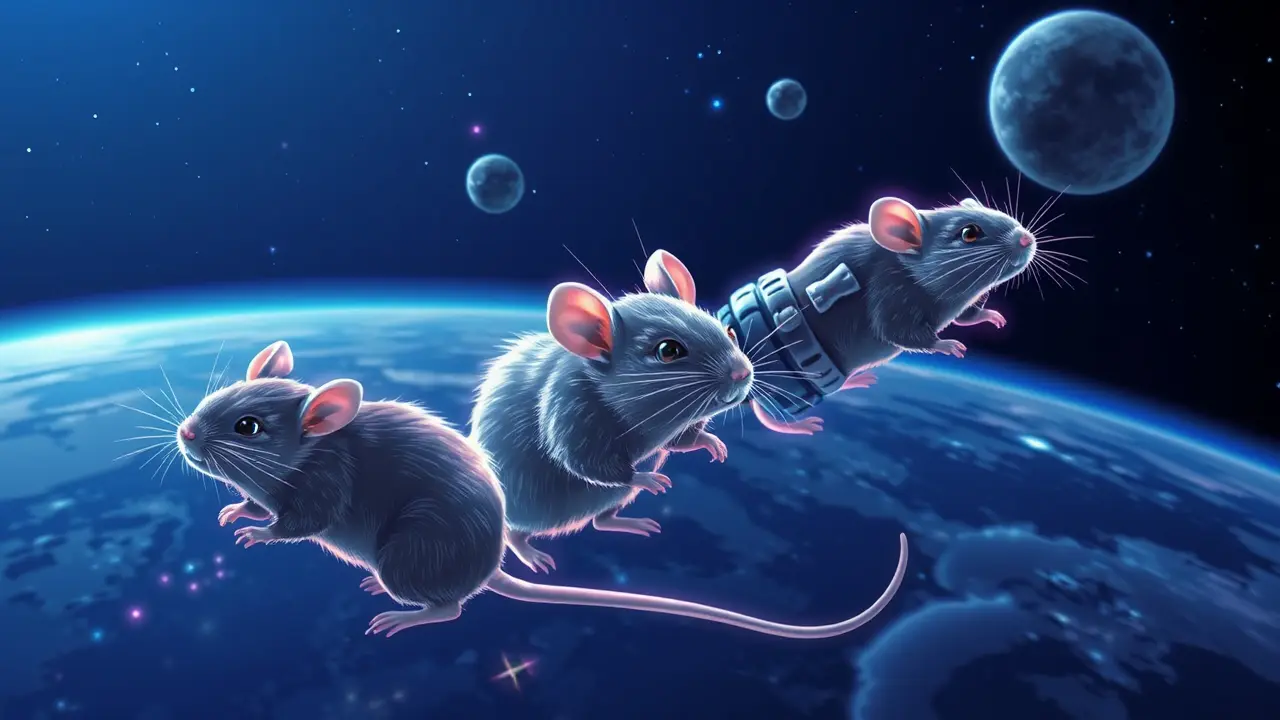
Sciencespace & astronomyNASA Missions
China launches astronauts and mice for first space station mammal research.
TH
Thomas Green
2 days ago7 min read
In a bold stride for orbital science that echoes the grand visions of private space pioneers like Elon Musk, China has successfully launched a trio of astronauts accompanied by four mice to the Tiangong space station, marking the nation's inaugural foray into in-orbit mammal research. The Shenzhou-21 crew catapulted into the heavens aboard a Long March-2F rocket from the Jiuquan Satellite Launch Centre, nestled in the vastness of the Gobi Desert, at 11.44 pm Beijing time on Friday, a precision operation confirmed by the China Manned Space Agency. Merely ten minutes into its ascent, the spacecraft executed a flawless separation from its rocket, slipping into its predetermined orbit with the kind of pinpoint accuracy that speaks volumes about the technological maturity of China's space program, a program increasingly viewed as a peer to NASA and Roscosmos.This mission is far more than a routine crew rotation; it represents a fundamental leap in China's ambition to establish a permanently inhabited orbital outpost capable of sophisticated biological research, with the humble mouse—a workhorse of terrestrial laboratories—now taking a giant leap for rodent-kind. The implications are cosmic; studying mammalian physiology in microgravity, from bone density loss and muscle atrophy to complex immune system responses and reproductive health, is absolutely critical for understanding the long-term viability of human life beyond Earth, whether on a months-long journey to Mars or for extended habitation on a lunar base.We can draw a direct line from the early days of NASA's rodent research on space shuttle missions to this moment, where China is now building its own foundational dataset, a necessary step if humanity is to ever become a multi-planetary species. The Tiangong station, a gleaming technological marvel in low Earth orbit, thus transforms into a unique laboratory where the subtle, persistent tug of gravity is removed from the equation, allowing scientists to observe biological processes in their most fundamental state.One can only imagine the intricate life support systems meticulously designed to keep these tiny astronauts alive and healthy, a miniature ecosystem within the larger station, providing them with food, water, and air while a suite of sensors likely monitors their every heartbeat, movement, and metabolic change in real-time. The data streamed back to Earth will be invaluable, not just for China but for the global scientific community, offering insights that could lead to breakthroughs in treating osteoporosis and sarcopenia in the elderly on Earth, or in developing countermeasures for astronauts on future deep-space voyages.This mission firmly places China in an elite club of nations conducting advanced life science research in space, a strategic move that underscores its long-term commitment to being a leading spacefaring power. The geopolitical dimensions are unmistakable; as the International Space Station nears the end of its operational life, Tiangong stands poised to potentially become the sole permanent station in orbit for a period, making every experiment conducted aboard, especially one as pioneering as this mammal study, a significant contribution to human knowledge. The success of this launch and the research to follow is a testament to decades of methodical planning and investment, a slow and steady race to the stars that is now yielding spectacular dividends, pushing the final frontier a little further out for all of us.
#featured
#China
#Tiangong space station
#Shenzhou-21
#astronauts
#mice
#mammal study
#space biology
Stay Informed. Act Smarter.
Get weekly highlights, major headlines, and expert insights — then put your knowledge to work in our live prediction markets.
Related News
© 2025 Outpoll Service LTD. All rights reserved.
